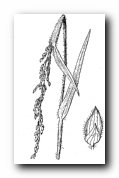
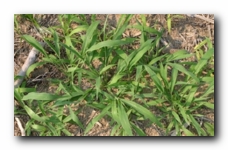
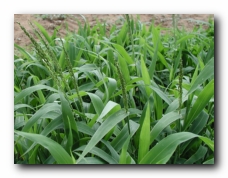
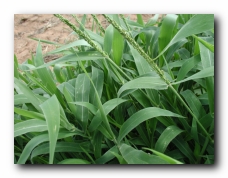
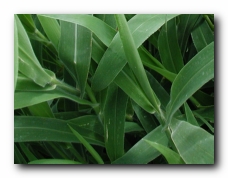
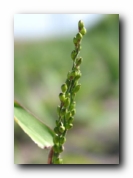
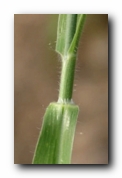
40" Rows:
Broadcast:
Sandy:
Loam:
Clay:
Habit: Tufted, branching annual.
Culms: Erect or ascending, often decumbent and rooting at the lower nodes,
50-150 cm. or more tall, branching from the middle and lower nodes,
leafy, softly pubescent at least below the nodes and beneath the panicles.
Blades: 8-20 cm. long, 7-15 mm. wide, ascending or spreading, flat,
rounded at the base, softly pubescent on both surfaces,
often finely papillose.
Sheaths: The lower shorter than the internodes, the upper usually overlapping,
densely ciliate, softly pubescent, often papillose.
Ligule: About 1 mm. long, ciliate.
Inflorescence: Panicles finally exserted, 8-20 cm. long, 10-30 mm. wide, the
branches short, appressed, loosely flowered, the axis and rachis
pubescent with long hairs intermixed, the short-pediceled spikelets
somewhat crowded on several narrow spikelike racemes.
Spikelets: 5-6 mm. long, about 2 mm. wide, fusiform, pointed,
short-attenuate at the base, pilose, 5-7-nerved.
Glumes: The first more than half the length of the spikelet,
3-5-nerved (3-7) acute, the second and sterile lemma exceeding
the fruit, often obscurely reticulate, 5-7-nerved.
Fertile lemmas: Shorter and more obtuse than the glumes, enclosing a palea.
Fruit: 3.7-3.8 mm. long, about 2 mm. wide, elliptic, apiculate, transversely rugose.
Habitat: Prairies and low open ground along streams and irrigation ditches.
Synonyms: Urochloa texana (Buckl.) R. Webster
Special Notes: